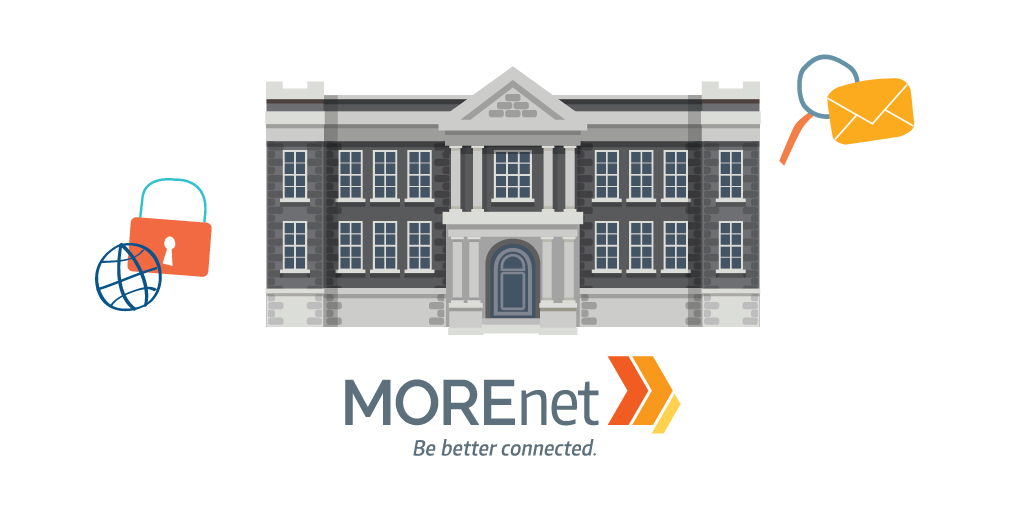
As key stakeholders in educational institutions make decisions to mold the best learning environment for today’s students, accurate and comprehensive data is crucial to influence the desired outcome. Many of our members currently struggle with downloading, uploading and merging data from multiple systems to provide information to these key stakeholders including leadership, parents, teachers, and counselors as well as required reporting for state and federal purposes.
When the Missouri Research and Education Network (MOREnet) began developing a solution to integrate data from different systems across an educational institution, our primary goal was to help our members merge and gather up-to-date and accurate data from a host of their existing applications automatically, without the cost of hiring third party development resources several times per year. As it turns out, we not only achieved this goal, but are also helping our members respond faster to new student admissions and are returning significant FTE cycles across the organization; valuable outcomes for every organization.
In 2019, we launched our latest technology integration solution to our K-12 member group, the K-20 Interoperable Data Solution (KIDS). With KIDS, information about students that is currently in a Student Information System (SIS) can be automatically shared into other applications such as a learning management system (LMS), Active Directory, Google Directory, reading programs, testing programs and more. Data is delivered in a single direction or bi-directionally in a safe, comprehensive environment using Kimono as a platform. And because KIDS is supported by the technical and education expertise of the MOREnet staff. As an extension of our member’s educational and technical staff, we are equipped to help set up and customize KIDS for our member’s specific needs, creating a service beyond the d-marc, with a long-lasting benefit for our members. They rely on us to provide updates, assist as information or applications change, troubleshoot when challenges arise, while also providing ongoing improvement and development to the KIDS offering.
Camdenton School District was one of the first members to subscribe to KIDS and began implementation after their Spring 2019 semester.
Camdenton has nearly 4,000 students within the school district. They are currently using KIDS to integrate data between four different applications: Active Directory account creation and suspension, Google groups management, Spedtrack data massage and Project Lead the Way (PLTW) class rostering. The KIDS program is customized for each school based on their individual needs. While Camdenton is currently using it for four specific programs, it can be expanded to a variety of other systems as Camdenton is ready.
Adam Johns, System Administrator at Camdenton Schools, said, “KIDS has definitely saved us time and made certain aspects easier. We can spend more time on other work processes while we know that we only have to worry about the KIDS systems if there is an issue.”
So far, Johns has had a good experience with the KIDS program. “We’ve had nothing but good interactions. Anytime we have had issues, 90 percent of the time it was fixed on the day of the event.”
Although KIDS began as a way to solve data challenges for K-12 schools, we quickly learned that higher education institutions have similar needs for data interoperability. The unique customization of this program opens the solution up to benefit our higher education members, whether within a single institution, across many or as they exchange transcripts, roster or grade information with K-12 schools.
Because of our primary member groups and how they work with one another, we are often in the convener role; we knew we wanted to establish a statewide forum for an open exchange on interoperability ideas and needs. We hosted our first conversation across our membership about data interoperability early last fall. This group was organized as the Missouri Data Interoperability Vision Exchange (MoDIVE), started as a day of discussions to learn and interweave an information exchange between K-12, higher education and even public libraries. The MoDIVE attendees discussed:
- Best practices for safe data transfer and storage
- Data interoperability options
- Benefits of data integration
- Templates for data interoperability plans
- Reporting needs
- How their organizations currently use data and their vision of data usage in the future
According to Nathan Eatherton, Deputy CIO at Columbia College and inaugural MoDIVE attendee, “There are dozens of integrations from point to point, each traditionally done manually. A data integration tool would mean less coding and configuring and more overall visibility and easy access to real-time data. Using a systematic approach could in most cases shave weeks of work.”
These conversations also lead to some obvious benefits in linking K-12 and higher education data for sharing transcripts as well as assisting counselors with identifying college readiness for students. Eatherton added, “More data integration between K-12 and higher education would provide a greater opportunity to build connections. If there was less data entry and better reporting, our college would have a bigger footprint in Missouri K-12 schools.”
As we continue down this road of KIDS development, having supported distance learning solutions for our members for two decades, including videoconference classes for dual credit offerings, we are now working on using KIDS to establish a direct link between the higher ed’s virtual college course system and the K-12 student’s local SIS.
While barely 24 months into our interoperability journey, we have barely scratched the surface with our solution and our members’ needs. However, we remain excited about the integration and streamlining opportunities we can offer our members, saving them time, building efficiencies, improving data quality and enhancing the user experience along the way.
